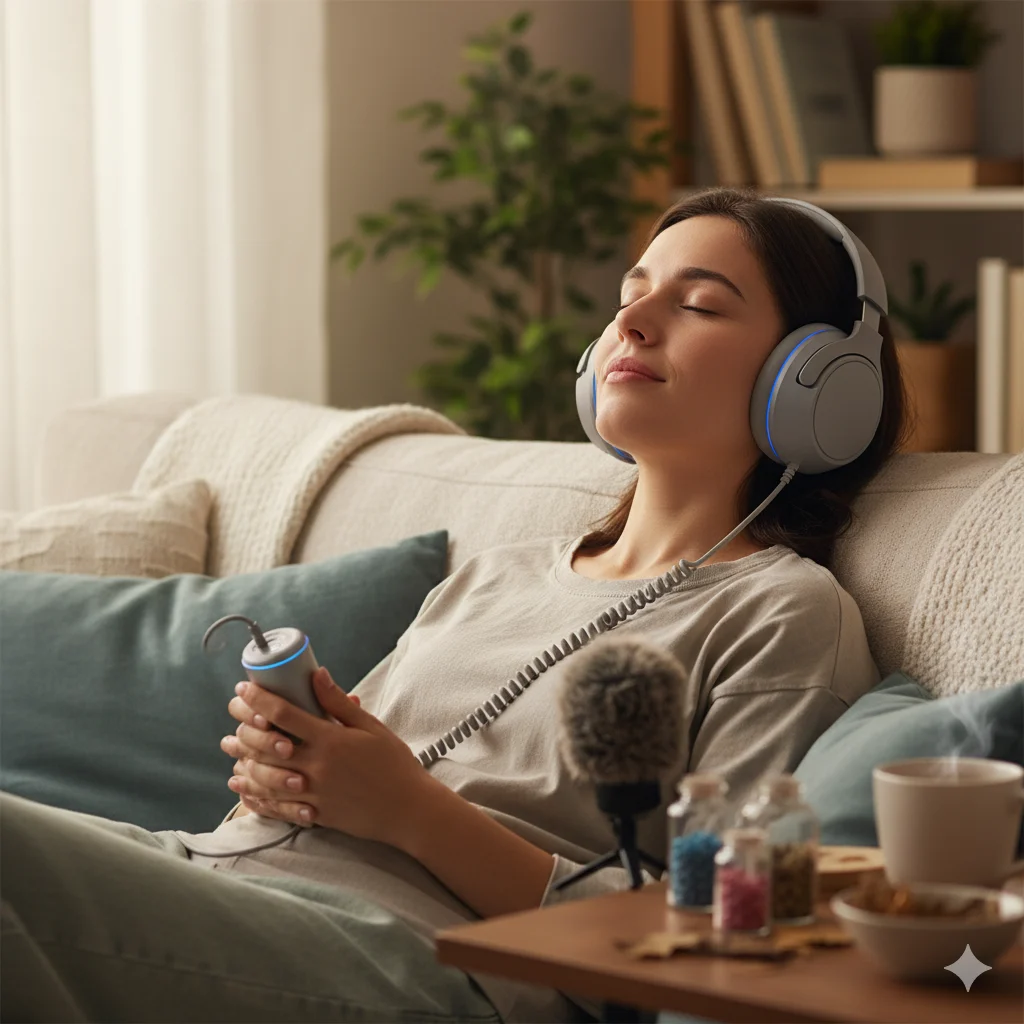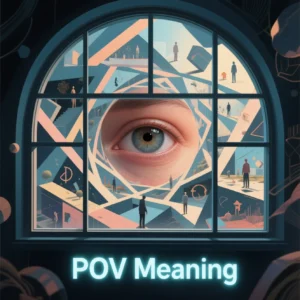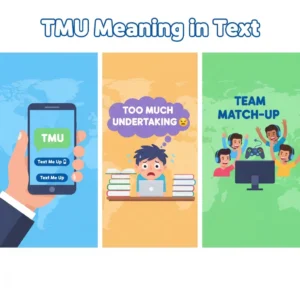Have you ever felt a pleasant tingling in your head when someone whispered close to your ear or tapped gently on an object?
That soothing, almost hypnotic feeling has a name — ASMR.
But what exactly does ASMR mean, how does it work, and why is it one of the most searched sensations on YouTube, TikTok, and Reddit?
Let’s break it down in this detailed, SEO-optimized 2025 guide.
🔍 What Does ASMR Mean?
ASMR stands for Autonomous Sensory Meridian Response.
It describes a tingling sensation that begins at the scalp and moves down the neck or spine when triggered by certain sounds, visuals, or touch stimuli.
People often experience it when listening to whispering, tapping, brushing, or gentle speaking.
This relaxing response is why ASMR has exploded in popularity as a form of stress relief and sleep aid online.
🧠 In simple words: ASMR is your body’s way of saying “I’m calm and comfortable right now.”
📖 ASMR Meaning in Detail (Full Form Explained)
| Term | ASMR Full Form | Meaning |
|---|---|---|
| ASMR | Autonomous Sensory Meridian Response | A tingling relaxation sensation triggered by sound, sight, or touch |
The word “autonomous” means self-governing — meaning it happens automatically without control.
“Sensory” refers to the body’s senses, “meridian” relates to the peak of pleasure, and “response” means the body’s reaction.
So, ASMR literally means a natural sensory reaction that produces relaxation or tingles.
🎧 How ASMR Works in the Brain
Scientists are still studying how ASMR works, but here’s what research suggests:
- It activates the parasympathetic nervous system, responsible for relaxation and calm.
- It may trigger the release of dopamine, oxytocin, and endorphins — “feel-good” chemicals.
- The brain’s reward and emotional centers light up, similar to when listening to soothing music.
This explains why many people report lower stress, improved mood, and better sleep after watching ASMR videos.
🎤 Popular ASMR Triggers
Not everyone gets tingles from the same thing. Here are some of the most common ASMR triggers people respond to:
| Category | Examples of ASMR Triggers |
|---|---|
| Sound-Based | Whispering, tapping, brushing, page turning, typing sounds |
| Visual | Hand movements, slow folding, painting, organizing items |
| Personal Attention | Roleplays like haircuts, spa, makeup, or doctor checkups |
| Tactile (Touch) | Hair brushing, gentle tapping, fabric sounds |
| Unintentional ASMR | Everyday sounds like rain, cooking, or soft talking |
🧠 Why Do People Love ASMR?
Millions around the world watch ASMR videos before sleeping or to de-stress after work.
Here’s why it’s so effective:
- Promotes Deep Relaxation — lowers heart rate and calms anxiety.
- Helps Insomnia — many viewers fall asleep to soft whispers or tapping sounds.
- Creates Comfort — simulates close personal care or attention.
- Boosts Focus — helps during study or meditation sessions.
- Triggers Positivity — releases serotonin and dopamine, improving mood.
🌙 ASMR Meaning on YouTube, TikTok, and Social Media
ASMR has become a global digital trend.
Creators upload millions of videos daily with titles like:
- “Whispered affirmations to fall asleep 💤”
- “Tapping on random objects for 20 minutes 🔊”
- “Relaxing hair brushing ASMR 💇♀️”
On TikTok, short ASMR clips focus on aesthetic visuals and close-mic sounds, while YouTube hosts long-form videos meant for relaxation and sleep.
In 2025, ASMR videos are watched by over 500 million people worldwide — proving its massive global reach.
🧩 History & Origin of ASMR
The term ASMR was coined in 2010 by Jennifer Allen, who wanted to describe the strange but calming tingling sensation she felt.
Before that, people on early forums called it “brain tingles” or “head orgasms” (though it’s non-sexual).
The first ASMR community started on Reddit, and soon after, creators began uploading ASMR content to YouTube — turning it into the internet’s favorite relaxation trend.
📺 Types of ASMR Content (With Examples)
Here are the main ASMR categories you’ll find online:
| Type | Example Videos | Purpose |
|---|---|---|
| Whisper ASMR | “Soft spoken bedtime story” | Helps with sleep and anxiety |
| Tapping ASMR | “Tapping on wood, glass, and paper” | Creates rhythmic comfort |
| Roleplay ASMR | “Spa day roleplay” | Simulates personal attention |
| Sound Triggers | “Keyboard typing sounds” | Relaxes the brain |
| Visual ASMR | “Hand movements and folding towels” | Stimulates calm visually |
💭 Misconceptions About ASMR
Let’s clear a few myths:
- ❌ ASMR isn’t sexual. It’s about comfort and calmness, not attraction.
- ❌ It’s not weird. Everyone experiences sensory relaxation differently.
- ❌ You don’t need headphones, but good audio enhances the tingles.
⚡ Does Everyone Experience ASMR?
No — ASMR doesn’t work for everyone.
Some people feel strong tingles, others feel mild calmness, and a few feel nothing at all.
It depends on personal sensitivity, trigger types, and even mood at the moment.
You can discover your triggers by watching different ASMR creators and paying attention to what relaxes you the most.
💤 Benefits of ASMR (Backed by Research)
| Benefit | Description |
|---|---|
| Reduces Stress | Calms the nervous system naturally |
| Improves Sleep Quality | Induces deep relaxation |
| Boosts Mood | Stimulates dopamine and serotonin |
| Helps Focus | Great for study or meditation |
| Decreases Anxiety | Creates mindfulness and calm |
🔔 ASMR Meaning in Real Life (Examples)
You may have experienced ASMR without realizing it.
Here are some everyday moments that cause ASMR:
- The sound of gentle rain on your window 🌧️
- Someone softly brushing your hair 💆♀️
- A teacher speaking quietly during class 📘
- Typing sounds or page turning while studying 💻
- A friend whispering secrets softly 🤫
If any of these made you feel calm or tingly — congratulations, you’ve felt ASMR!
❓ FAQs About ASMR Meaning
1. What is ASMR?
ASMR stands for Autonomous Sensory Meridian Response — a tingling sensation that promotes relaxation and calmness.
2. Is ASMR scientifically proven?
While studies support its relaxation benefits, ASMR isn’t fully understood scientifically yet.
3. Can ASMR help with sleep?
Yes! Many people use ASMR videos to fall asleep faster and reduce insomnia symptoms.
4. Who started ASMR?
Jennifer Allen coined the term “ASMR” in 2010, though the feeling existed long before.
5. Is ASMR weird or embarrassing?
Not at all — it’s one of the most natural ways people calm their brains in the digital age.
6. Can I make ASMR content?
Yes. All you need is a quiet room, a sensitive microphone, and patience to experiment with different sounds.
7. Does everyone feel ASMR?
No. About 70% of people report some form of ASMR, but intensity varies.
8. Is ASMR safe for children?
Yes, as long as the content is clean and age-appropriate.
9. What is ASMR used for?
Relaxation, sleep, focus, anxiety relief, and emotional comfort.
10. Where can I watch ASMR videos?
YouTube, TikTok, and Twitch are the top platforms for ASMR content.
🏁 Conclusion: Why ASMR Matters in 2025
ASMR isn’t just a passing trend — it’s a digital therapy for a stressed generation.
In a world full of noise, ASMR gives people a moment of peace, focus, and mindfulness.
So, next time you hear someone whispering into a mic or tapping softly on a cup, don’t scroll away — it might just calm your mind more than you expect.
ASMR meaning: A simple, powerful reminder that peace can come from the smallest sounds.



